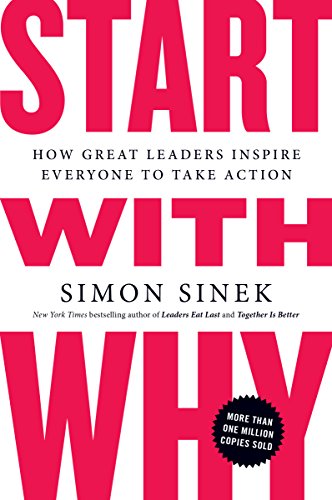

This article is an excerpt from the Shortform summary of "Start With Why" by Simon Sinek. Shortform has the world's best summaries of books you should be reading.
Like this article? Sign up for a free trial here .
What is Apple’s business strategy? How has Apple used it to become one of the most successful companies in the world?
We’ll cover Apple’s business strategy and why entrepreneur Simon Sinek believes the secret is that the company “starts with why.” Learn how to apply Apple’s business strategies to your own business.
The Apple Strategy and Golden Circle Decisions
Beyond marketing to consumers, all of Apple’s business strategy decisions, from product design to its advertising campaigns, put the WHY first.
Here are three examples of how Apple has done this over the past four decades:
1. The Mac Computer
The original Apple computer was designed to put accessible, easy-to-use computers in people’s homes. This broke up the monopoly that big businesses had on computing power, and it put opportunity back in the hands of the common man.
2. iTunes
The record industry had an iron grip on how people could listen to music—until Apple came along with the iPod and iTunes. By marketing the iPod as a device that put thousands of songs in your pocket, they focused on the WHY. (Note how they didn’t define the iPod as the WHAT of being an 8GB MP3 player.)
Further, with iTunes, they challenged the music industry’s strong grip on how people consumed music, letting them purchase songs digitally instead of whole physical albums. This fit Apple’s WHY of challenging the status quo and upsetting old power dynamics to empower consumers.
3. Apple Vs. Apple, Inc.
In 2007, Apple changed its legal name from Apple Computer, Inc. to Apple Inc. Apple had become an “ideas” company–a WHY company–and wanted its legal name to reflect its philosophy.
Results of Apple’s Business Strategy
Making every decision with their WHY in mind has put Apple ahead of its competitors both in the tech industry and beyond. The core of the Apple strategy is to focus on the WHY.
Would it feel right to stand six hours in line for a new Dell computer? No – because the many other computer manufacturers have focused on the WHAT. When you buy a WHAT product, you don’t feel like you personally identify with the company’s mission (if it even has one). It’s a simple transaction, and one computer is just about as good as another.
In contrast, people who buy Apple’s WHY will choose Apple products over competitors’, because they are inspired. They feel they are part of the mission. This is key to Apple’s business strategy.
WHY Isn’t About “Being Better”
Which is better, Mac or PC? Everyone has an opinion, and the debate can get heated.
But when you use The Golden Circle, winning a debate like that one doesn’t matter.
Depending on the customer, “best” is subjective. Even though Apple is an industry leader, their products are right only for those people who share Apple’s WHY. Other people may align with different missions and have different needs. And that’s okay. It’s not about a Mac or a PC being “better” or “worse.” It’s about making sure the right people who align with your WHY are using your product. Targeting the right people, rather than the masses, is part of the effectiveness of Apple’s business strategy.
Consistency in the Apple Strategy
If a WHY is a belief and a HOW is an action, the WHAT is the product. The Apple business strategy is to create consistent, authentic products.
Authenticity is important when it comes to sales because it helps people believe in what they’re selling. By being authentic and honest (and appealing to the limbic brain), you can build customer relationships that are based on trust, not manipulation. Consistency and the authenticity that comes from it create long-lasting relationships and long-term success.
Authenticity In Action: Apple Versus Dell
Apple believed–and continues to believe–that its products like the Mac, iPod, and iTunes challenge the status quo. As a result, people understand WHY Apple does what it does, which is what makes their products authentic. This is part of the Apple business strategy.
To compete with Apple, Dell released its own MP3 players and PDAs. But Dell doesn’t communicate its WHY, which means that consumers have no idea why Dell made those products other than to compete with Apple. This translates to a lack of authenticity, which makes entering a new market segment more expensive and harder.
The takeaways from this example are 1) that authenticity comes from having a clear WHY that you believe in, 2) authenticity is important to consumers, and 3) cultivating authenticity is important to sustained success. These are key to Apple’s business strategy, and to any business strategy.
———End of Preview———

Like what you just read? Read the rest of the world's best summary of "Start With Why" at Shortform . Learn the book's critical concepts in 20 minutes or less .
Here's what you'll find in our full Start With Why summary :
- What Steve Jobs did right compared to every other business leader
- How to define your organization's WHY
- How to help your organization avoid losing its edge as it succeeds






